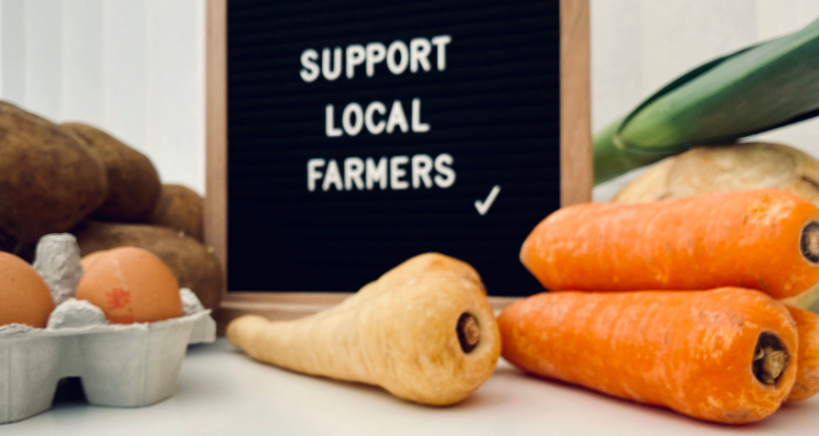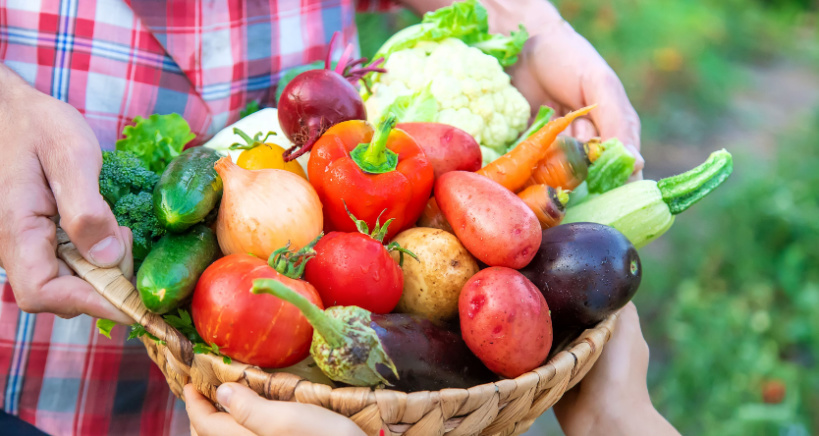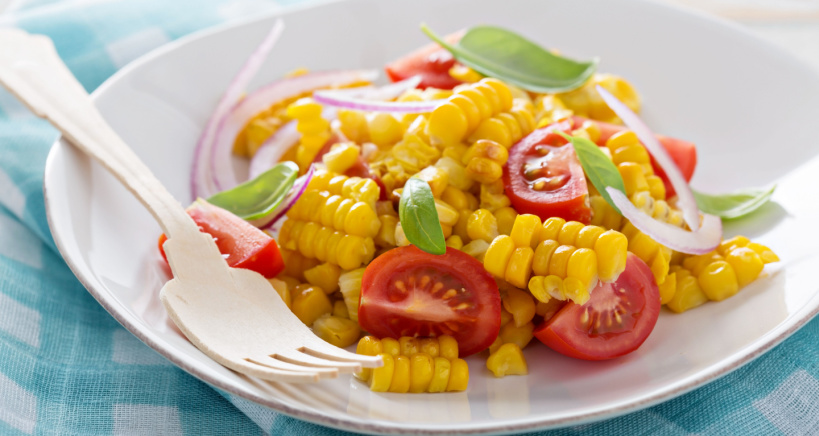 What do you think the most popular suppers are in America? A survey a few years back revealed the six most popular dinner dishes were:
What do you think the most popular suppers are in America? A survey a few years back revealed the six most popular dinner dishes were:
- Chicken, rice, and salad
- Potatoes, cheese, and beans
- Bread, egg, and bell peppers
- Fries, beef, and tomatoes
- Quinoa, turkey, and broccoli
- Couscous, pork, and spinach
Now, imagine traveling back in time to North America 600 years ago. What were the most common suppers in the year 1422?
The native tribes that lived in the Americas in the precolonial era didn’t have access to chicken, rice, pork, and other Eurasian native foods. Instead, they feasted on bison, salmon, wild rice, corn, as well as many ingredients that today we consider weeds, like acorns or dandelion leaves. Because they used so many ingredients that are not common in the typical American kitchen, native recipes had totally unique flavor profiles.
Over the last few centuries, indigenous culinary methods and native food recipes have been lost, or nearly lost. But now, there are organizations, tribes, and individuals worldwide working to reclaim, rediscover, and repopularize endangered culinary heritages. And many are finding that indigenous agricultural and cooking methods are not just valuable for the tribes themselves, as a celebration of their histories and cultures, these methods are universally appealing to those who want a more sustainable, locally-sourced, land-based lifestyle, and for people looking to get away from unhealthy processed foods.
Not to mention finding recipes that are unique and delicious.
What is Indigenous Cooking?
Cooking with locally-sourced ingredients is trending. Food connoisseurs, especially Gen Z ers and those interested in wholesome and sustainable cooking, often prefer to seek out local farms and businesses for ingredients. Native cooking is sort of like cooking with hyper-locally-sourced ingredients. It celebrates pre-contact era foods, and therefore uses only native species from the lands that tribes actually lived on. In practice this means that indigenous recipes in the Americas may include corn and other native cereal grains, but doesn’t include ingredients like wheat or milk. By contrast, Europe’s indigenous recipes do not include foods like corn and potatoes.
Beyond the celebration of native species and local diversity, indigenous cuisine celebrates the cultural aspect of food. It tells the story of the culture’s history. For example, the Paiute tribe in North America used the black oak acorn as a food staple. Chasing the black oak acorn brought the Paiute across the mountains in Western North America. Their migration history was actually driven by the search for black oak acorns and other native foods.

Sometimes, indigenous foods also narrate the values of aboriginal peoples. The Ainu are a people native to the Pacific island of Hokkaido, which Japan colonized and annexed in the 19th century. The Ainu were traditionally hunter-gatherers who used sustainable foraging practices that revealed their connection to the land and to nature. When gathering locally-sourced wild plants, they ensured that enough remained behind to feed the animals and insects that relied on these plants, and thus ensured the renewal of the cycle of life the next season. When the Ainu hunted or foraged for native foods, they communicated with the spirits of the flora and fauna, in synergy with the world around them.
Lost Traditions
Over the course of the last several centuries, and especially the 19th century, many indigenous people found that access to their land was shrinking. Imperial Japan, for example, forbade the Ainu from practicing their hunting rituals, and reduced access to their land which curbed the Paiute’s ability to cultivate black oak acorns.
Sean Sherman is a Lakota tribe member, and founder of The Sioux Chef, an organization designed to revitalize Native American cuisine. He explained that Native American tribes endured great trauma, dispossession, and forcible assimilation in the 1800’s. Their rapid, and sometimes violent assimilation destroyed their links of cultural, and culinary transmission. The tribe, bereft of much of its culinary heritage, was reduced within a short time, to surviving mostly on U.S. government food handouts on Indian reservations. These handouts, which often consisted of processed foods, didn’t reflect the native foods that the Lakota had eaten for centuries, and wreaked havoc on their physical and mental health.
A Culinary Renaissance
By age 29, Sherman, who had worked in numerous restaurants in the Minneapolis area, had an epiphany. He realized that he had never heard of any restaurants offering Native American foods! After this realization, he began to extensively research Native American cuisine, and this culminated in the creation of his cookbook, “The Sioux Chef’s Indigenous Kitchen.” In lieu of his findings about indigenous foods, his book does not contain any recipes that contain dairy, wheat, beef, pork, or cane sugar, as these ingredients were brought to North America by European colonizers.
Sherman is one of many individuals working to revitalize and rediscover indigenious cuisine. Joe McLeod is another. Unlike Sherman however, who grew up on canned goods and government handouts, McLeod was raised with his Māori iwi (tribe), Tamakaimoana in New Zealand and learned to forage and cook the Māori way. Not only did his iwi cook their fish, possum, pork, and venison over a traditional open fire, growing up he had to weave his own flax plate on which he could eat his lunch. Now, McLeod works to preserve Māori culinary traditions and to safeguard Māori knowledge about indigenous plants and native foods.
Worldwide, nearly every aboriginal group from Africa, to Europe, to Asia, to the Americas has a Sherman or a McLeod leading and promoting the groups’ culinary history, traditions, and cultures. Slow Foods, an organization devoted to preventing the disappearance of local food cultures and traditions, has also launched the Indigenous Terra Madre network to promote and support indigenous culinary voices and to advocate for indigenous communities’ rights to forage, farm, and hunt in their traditional ways on their ancestral lands.
Benefits of Indigenous Cuisine
It goes without saying that, for aboriginal tribes, preserving their culinary heritage is integral to preserving their cultural and tribal identities. But native food has a universal appeal as well. Some of the benefits of indigenous cuisine include:

- Health: Native tribes in the Americas developed agricultural systems suited to the environment. One famous example is the “three sisters:” corn, beans, and squash. The three sisters were planted together so that the plants supported, shaded, and enriched each other. In addition to the agricultural benefits of the “three sisters”, a meal of corn, beans, and squash provided native tribes with a nutritious and balanced meal consisting of carbs, proteins, and vegetables. Many indigenous diets consisted of healthy balanced dishes, in contrast to the diets of most modern-day Americans. Additionally, modern processed foods often contain sugar, fat, salt, or chemical additives, but indigenous diets were all natural, locally-sourced, and overall much healthier.
Chefs and consumers looking for more wholesome and healthy dishes may benefit from exploring indigenous ingredients, recipes, and food preparation methods.
- Flavor: One of the pluses of traveling to new countries and places is trying new varieties, textures, and flavors of food. With indigenous cuisine, chefs and consumers can enjoy new and unique seasonings just by traveling in their own areas and finding the native food ingredients that indigenous tribes cooked with for thousands of years. Many local plants are underused in mainstream cooking and Indigenous cuisine brings these brand new tastes into your kitchen.
- Sustainability: In 2021 the Food and Agricultural Organization of the United Nations studied the agriculture, foraging, and eating practices of eight indigenous tribes from the Amazon, Sahel, Himalayas, Pacific Islands, and Arctic. The study reported that these practices were among the most sustainable in the world. They were efficient, reciprocal, preserved the natural habitat, and generated little to no waste.
- Unique cooking methods: Because native tribes were intimately familiar with local ingredients, their cooking methods were designed to draw out the unique flavors and full nutrients from these native foods. For example, The Paiutes had unique methods of leaching acorns in the river stream in order to remove their bitterness, leaving only nutty, sweet, woodsy flavors behind. Furthermore, they boiled acorns with a heated soapstone. According to Paiute members, conventional cooking methods, like using an ordinary cooking pot, can’t provide the right amount of heat to cook acorns, and instead leave them tasting bland. Imitating indigenous cuisine by varying cooking methods and tailoring these methods to the ingredients can help chefs produce more flavorful foods.
- Food equity: A big part of the renaissance of indigenous cuisines is the advocacy that comes with it. Food in the modern world is politicized, and access to food is politicized as well. By promoting and celebrating indigenous cuisine, allies can work together towards the goal of aboriginal tribes having access to land for locally-sourced foraging and farming, and to clean drinking water.
Getting Started with Indigenous Cuisine
Native foods have universal appeal. If you want to bring the flavors of the forest and the land around you into your kitchen, here are some ways to get started.
- Do your research: The first thing Sean Sherman did when he started his indigenous cuisine initiative was hit the books. For home chefs looking to get started, there are a lot of resources available. For example, there are maps online, like Native Land Digital, where you can see which indigenous tribes are native to your area. Many of these tribes have published cookbooks or have recipes available online. Another topic to explore is the scope of native plant and animal species in your area. Read some articles and learn what grows around you that is edible.
- Start foraging! Some aboriginal tribes were hunter-gatherers, but even those who were farmers, knew what herbs and spices grew in the forests and fields around them. If you are looking to forage for local ingredients there are two things to be aware of. First of all, make sure you are foraging sustainably – that you leave enough behind to ensure the balance of nature. And, if there are native people living in your area, check with them to make sure that you are not taking the ingredients they need to maintain their culinary heritage. Additionally, foraging can be dangerous for novices. If you can, find an expert to show you around the first few times. And never, ever, eat anything you find on the land, unless you are 100% sure that it is safe and non-toxic.
- Grow an indigenous garden: In addition to researching wild edibles, consider studying native agricultural techniques and which indigenous plants can be grown in your area. You can plant a native vegetable and herb garden in your backyard that is chock full of the ingredients you can use when crafting native dishes.
- Remove non-indigenous ingredients: To get the full health, sustainability, and locally-sourced benefits of indigenous cooking, don’t let processed sugars, fats and other ingredients into your foods. Here is an indigenous recipe that is sure to whet your appetite!

Sweet Berry Wild Rice Recipe
The Ho-Chunk are an indigenous tribe from the American Midwest. Ho-Chunk chef Elana Terry shares a recipe using wild rice, an indigenous North American aquatic grass.
Ingredients
- 1-1/2 cups of cooked wild rice
- 1/2 of a butternut or acorn squash
- 1/4 cup plus 2 tablespoons of maple syrup
- 1/2 cup of sliced strawberries
- 1/2 cup of blueberries, with an additional 1/4 cup for garnishing
- 1/2 cup of fresh cranberries
- 1 cup of water
- 1 tablespoon of pumpkin seeds (coarsely chopped)
- 1/4 teaspoon of pie spice
- Salt
Instructions
- Preheat the oven to 350 degrees.
- Peel the squash and slice it into quarter-inch cubes. Toss the cubes in the 1/4 cup of maple syrup and place on a lined cookie sheet.
- Bake the squash for 15-20 minutes until soft.
- In a sauce pan boil berries, 2 tablespoons of maple syrup, water, spice, and a pinch of salt.
- After the berry mixture starts to boil, reduce the heat and simmer the mixture until it’s reduced.
- Mix the berry sauce with the wild rice. Add the squash, garnishing blueberries, and pumpkin seeds, and mix.